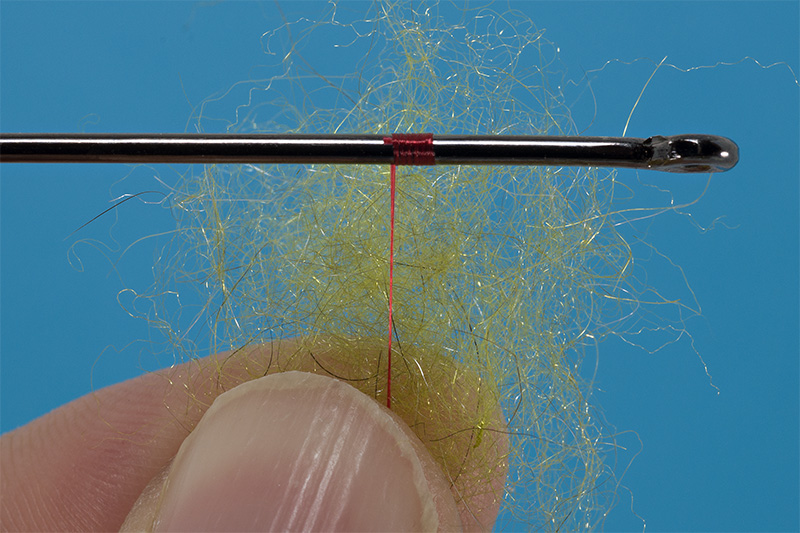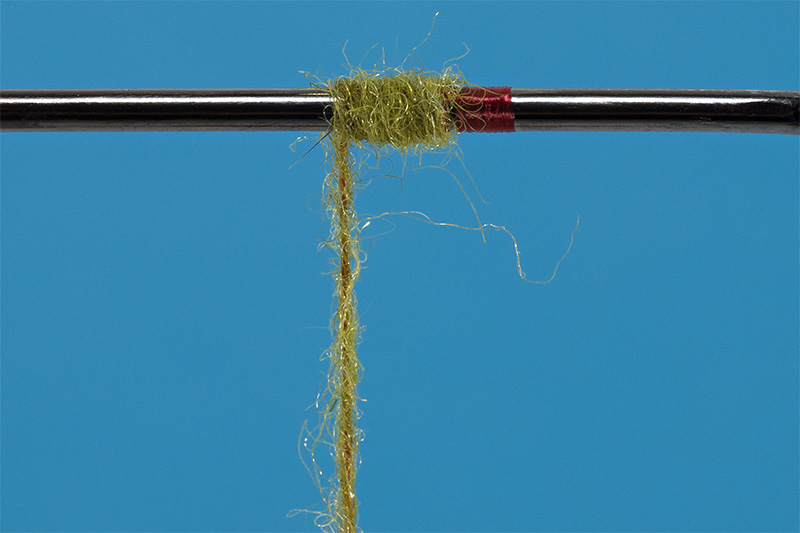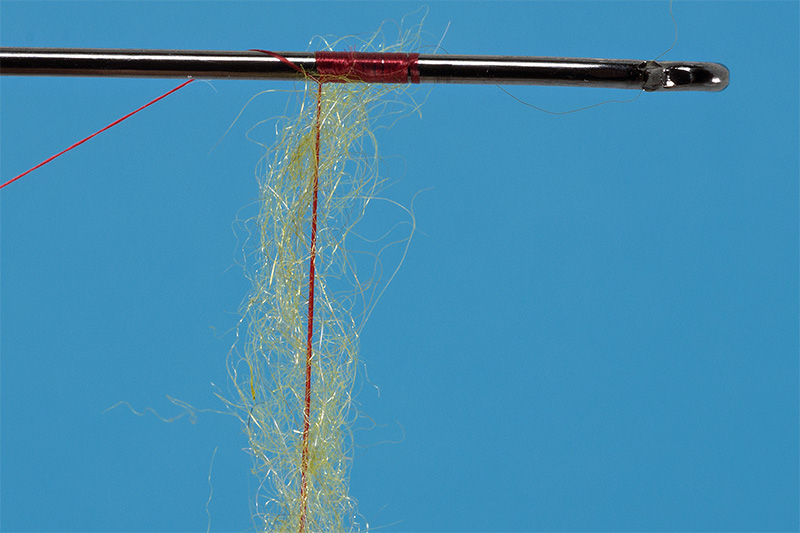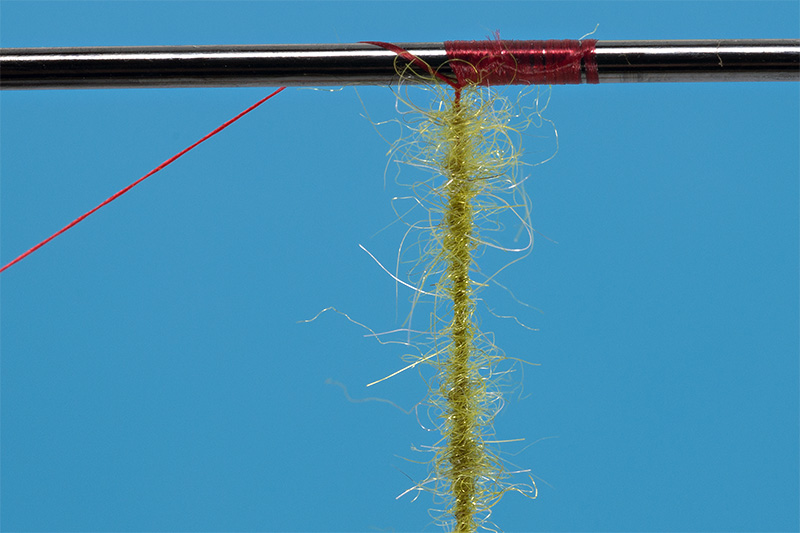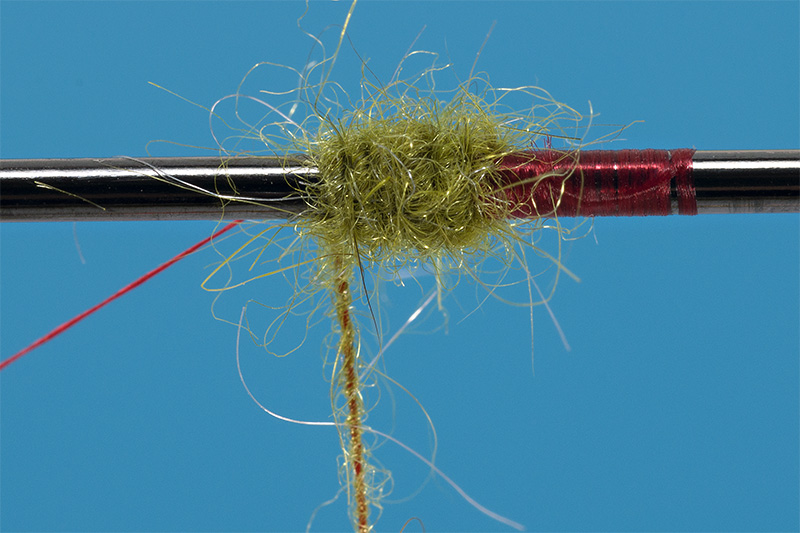On the market you’ll find a lot of dubbing made of natural materials, synthetics materials or a mix between them.
Everybody assure us that the dubbing that they sell is excellent and can be use for almost everything. Unfortunately nobody make tests and comparative tests and nobody will tell you exactly if is good for your needs.
So according with a fly tier needs I intend to make a small series with photos of dubbing to see how they look on the threads.
First dubbing that I decided to put in test is Super Nymph Dubbing – a dubbing that I use especially for nymphs and scuds.
When I’m thinking at scuds and nymphs I’m looking for a translucent type of dubbing with reflexes. A dubbing that will stay a little bit spiky to simulate the gills if is necessary or small legs in other situations.
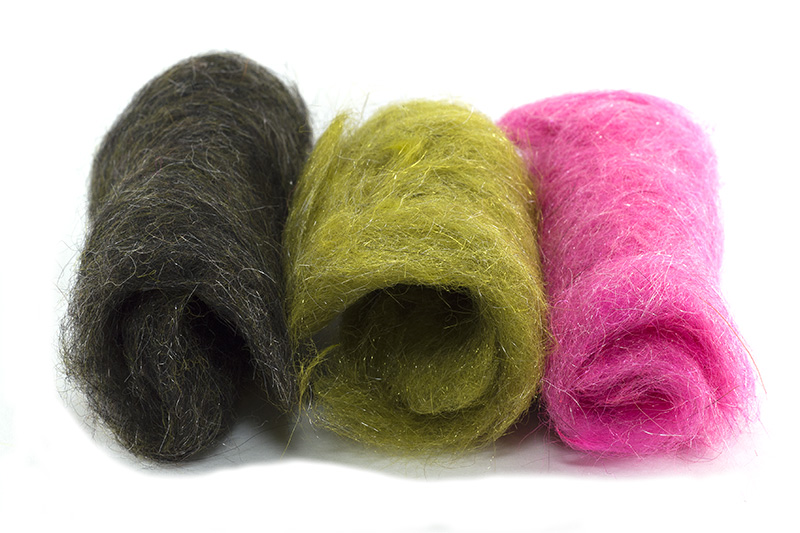
This dubbing is a mix between rabbit dubbing and synthetic dubbing in different shades. Some main colors are obtained by mixing other colors.
First:
I dubb the material with fingers to check how easy can be.
-can be dub easy ( not easy like a rabbit dubbing ) but easy enough to not use a wax for dubbing.
-I noticed that the structure is not uniform, the soft natural dubbing is like a main material and the synthetic is a little bit more coarse and bristle.
-gives a translucent effect quite evident.
Second:
-I used a dubbing loop to see how will look the dubbing if I use this technique:
-seems to be more spiky. In this case the dubbing can be mounted on the hook shank under the bead ( if I tie flies with beads ) because with this bulky look will imitate much better the gills and the legs of the insects.
I also tied a few saltwater flies with this material and looks nice but I used a brush to give a more bristle look.
So I recommend this dubbing for nymphs and scuds. Also can be used for some emergers but not for very small ones.

